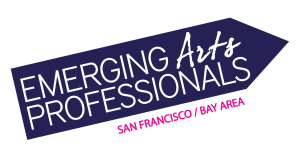– Technology: inexpensive/efficient
– communication/resources/audience participation, knowing where to invest your time.
– Teaching older generation how to use new tech requires investment
– Technology allows for direct access. Allows random individuals access to people with similar ideas / activities “you like ducks? Me too!”
– Is snail mail still cool?
– Is tweeter elitist?
– Clarifying the role of the artist
– More innovative ideas by orgs and artist to get founding
– Economic realities (collaboration, creative thinking, sharing)
– Board members becoming younger in order to stay relevant with youth
– Developing more sophisticated grass roots tactics
– Creative / innovating technology
– Experiential learning
– Sustaining job personal and creative integrity and balance
– Career counseling
– Looking outside traditional 501c3 model, non profit/for profit collaborations; entrepreneurship
– Alternative spaces, redefining how people participate, experience art.
– Technology (social networking, collaboration, self production, inexpensive)
– Update the trend / notion of the starving artists or impoverish non profit on the bring of collapse
– Demand for professional development
– Accessible professional development
– Collaboration
– New media. Leadership empower, organizations sector
– The emerging arts sector has been evolving along with new media, towards higher level of interaction and democracy
– Economy forcing more collaboration between arts orgs (sharing resources)
– Technology playing a larger role in marketing/out reach
– Should we away from starting with models and towards context and contact driven ways of working in our organization
– Education and participation leads to appreciation of art
– Flexibility – not NPO, psychically and geographically
– More accessibility to: different view points, online galleries, marketing to new audiences
– Instant gratification in an ADD culture
– Middle sized and middle management squeeze
– Shifting from movements and organizations as primarily autocracies and some democracies to being democratic adhocracies. Not leading down as primary, but also leading across and leading up. Steppping up and stepping back as needed.
– Information and opportunity overload
– Evolving media, creating space for poli/mesh art (theater, animation, film, dance, DJ’s, sculptors, etc under one umbrella.
– Collaborations: how do we choose our partners, what are the impacts of these collaborations.
– Identity: communicating who we are / what we do. Addressing gap between how we identify ourselves and how others identify us.
– Need for more sophisticated used of technology/tools by all generations.
– More collaboration, less one leader oriented.
– Virtual arts organizations (back office)
– Turnover doesn’t equal sustainability
– Lack of accessibility: to new media in certain US communities and to cultural institutions that lack a lot of money.
– Fragmentation of: audience, founders, and creative/artists through over saturation of diverse media forms.
– Innovation (renewed value of)
– Adapting, changing, evolving expanding.
– Burnout of arts administrator (short tenures)
– Need for mediation between generations of arts professionals
– Shared leadership: everyone in the organization has leadership roles
– More festivals, more disciplines come together
– New tech/media outlets to build outlets (ex. Facebook, Twitter)
– Coming onto a crossroads: point at which an artist has to stay or go from the field. Where do you go? If you can stay, what do you need in order to stay?
– Grad school (safe environment to transition)
– Arts advocacy
– Seeking + identifying right match for collaborators and partners
– Company-based art to project-based
– Fostering a leader – full group sharing leadership
– Forums, networks, bridge building
– Use of technology to collaborate and market
– Hope
– Career trajectory for emerging and established professionals
– What are the new implications of new media? On emerging/start up organizations, on established organizations and the interaction of both
– Burn out/work and life balance: the dichotomy of life vs. work (how to blend them), lack of career path, sense of martyrdom is not sustainable
– Explore new models: non-profits should look to small businesses for ways to address some of their issues. Non-profit/for-profit hybrids. Incorporate/recruit/develop skilled volunteers
– Crossroads – broad trend among many present today. Feeling that it may be time to change, but stay within the field
– Crosspollination: as artists/teaching artists/administrators/board members etc. to talk and share experiences
– Disconnect between established artists and arts administrators, established organizations and younger entrepreneurial efforts
– Artists working as art administrators: over taxed and neglecting their craft/artwork
– One must move to new organizations to grow
– Risk aversion for older more established art organizations
– Encourage risk taking but not at the expense of tried and true
